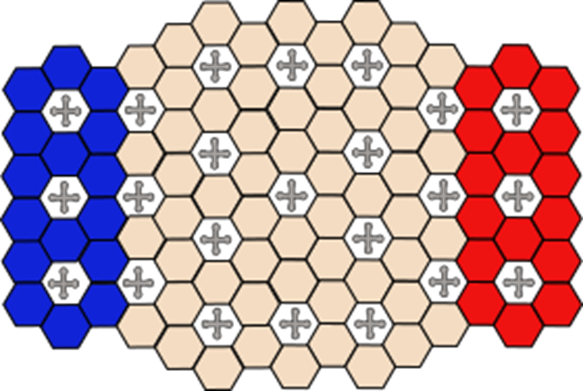This is a very rough outline of a chess-style game. The pieces and their movements are described below:
King
- Moves only one square at a time.
- Cannot move adjacent to an opponent's king unless the player's king is on a rotator (assuming 'rotator' refers to a specific game element; the exact meaning isn't provided here), in which case it can move one square. If a queen is present, standard movement rules apply.
- Capture occurs only under specific conditions (not detailed here).
Queen
(Movement rules not specified)
Rook (Fortress)
- Cannot move independently; another piece must be present on the same circle.
- Active only when another piece is immediately adjacent (not necessarily on the same rotator).
- Cannot move with an opponent's rook. This exception does not apply to the king (one move) or queen (three moves).
- Captured by the king and queen (possibly involving a change of position).
- Can be captured by another rook with stronger support (meaning not defined).
Bishop (Cannon)
- Moves in a straight line with a specific cadence (1, 3, 2, 2, 1, 1…), where the number represents the distance from the bishop. Cannot shoot over its own pieces or opponent's pieces, except when positioned immediately behind a rook, in which case its shooting range doubles in the direction of the rook.
Knight (Rider)
- Moves one or two squares on its rotator. Can move over its own pieces or opponent's pieces.
Pawn
- Moves freely; has one point value.
Castling
- An entire rotator containing six pieces can be exchanged for an empty rotator. This can be done only once per game. Alternatively, it can be done multiple times, but only after the opponent has castled.
